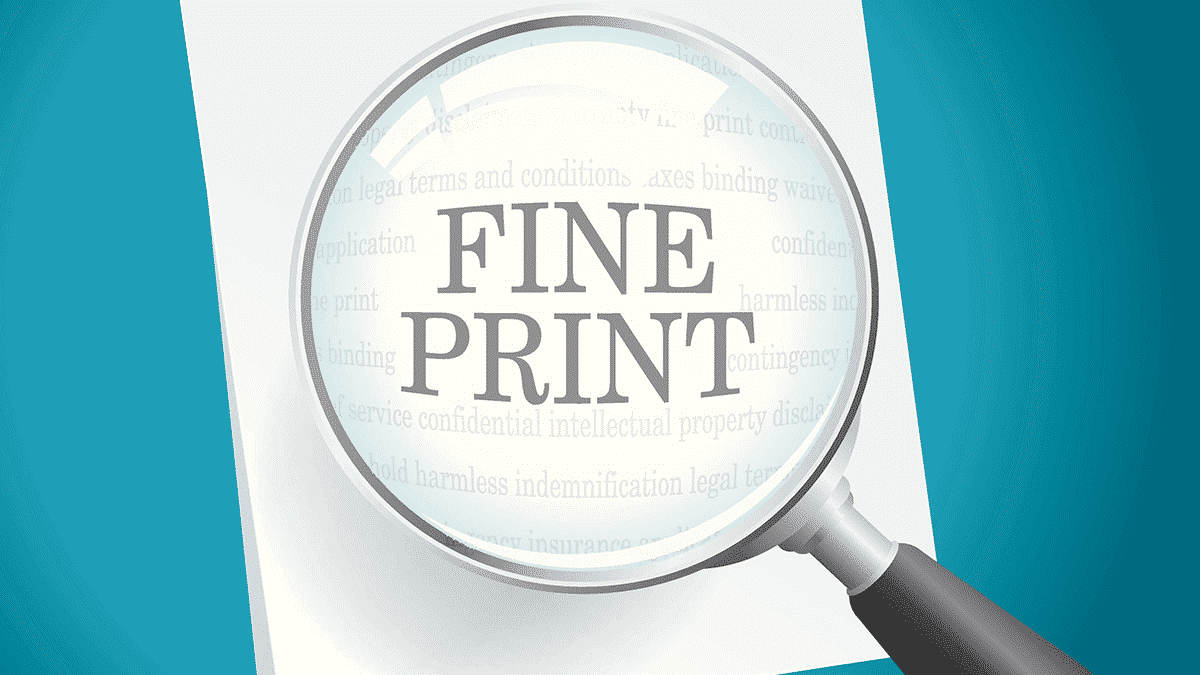On this page
Building a sizeable retirement nest egg can take some effort, but most employees leave the heavy lifting to their employer. According to the government’s Retirement Income Review, 75% of contributions going into the super system were made by employers in 2018–19.
While your employer’s compulsory Super Guarantee (SG) contributions provide some level of financial security in retirement, if you are relying on that alone you risk not having enough super to enjoy the retirement you dream of.
The solution is to give your super account a boost by making some extra contributions yourself. Although working out the best way to do that can be a little confusing, here’s an overview of the main types of super contributions.
Super contributions: The two basics you need to know
1. It’s all about the tax
The key to understanding different types of super contributions is to remember it’s all about what tax you pay. There are two main types of super contributions:
- Concessional (before-tax) or tax-deductible contributions
- Non-concessional (after-tax) or personal contributions.
You may also receive contributions into your super account from the Australian Government if you meet certain eligibility criteria.
2. There are annual caps on your contributions
As there are tax benefits from holding savings in your super account, the government has strict annual caps or limits on both your concessional (before-tax) and non-concessional (after-tax) contributions into super.
The caps are indexed and any contributions you make over these annual limits are subject to extra tax. The limits apply to the total of all your super accounts across different super funds.
Contribution type
General annual caps or limits (2022–23)
Concessional (before-tax) contributions
- $27,500 regardless of age
- If you have a Total Super Balance of less than $500,000 on 30 June of the previous financial year, you can roll forward any unused amount of your cap for up to five years to make a carry-forward contribution
Non-concessional (after-tax) contributions*
- $110,000 if your Total Super Balance is less than $1.9 million
- $330,000 over a three-year period if you are aged under 75 and using the bring-forward rule. Note if your Total Super Balance is $1.68 million or more the bring forward rule is modified.
- Nil if your Total Super Balance is $1.9 million or more.
Concessional (before-tax) super contributions: 5 main types
There is a 15% contributions tax payable on all concessional super contributions when they are added to your super account as these contributions come from your before-tax income.
1. Superannuation Guarantee (SG) contributions
SG contributions are the compulsory contributions made by your employer into your super account on your behalf as part of your total salary package. In 2023–24, the SG rate is 11% of your ordinary time earnings (OTE). This is currently set to rise slowly to 12% on 1 July 2025.
| Financial year when SG rate to increase | SG rate |
|---|---|
| 2023–24 | 11.0% |
| 2024–25 | 11.5% |
| 2025–26 | 12.0% |
2. Award contributions
In some Employment Awards or Agreements, your employer may be required to make specified super contributions..
The amount of these super contributions depends on the particular Employment Award or Agreement certified by an industrial authority like the Fair Work Commission.
3. Additional employer contributions
These are contributions made by an employer above the compulsory amount required by the SG legislation or Employment Award. They are generally paid to employees of large companies as part of their salary package, or to some public sector employees.
4. Salary sacrifice
Salary-sacrifice contributions are an agreement you make with your employer to pay some of your before-tax salary directly into your super account. At the start of the financial year, you decide how much you want your employer to pay into your super account each pay cycle before the income tax on your salary or wages is deducted.
By making a salary-sacrifice contribution, you are reducing your taxable income and potentially, how much tax you pay. This can be worthwhile if you pay more than 15% tax on your last dollar of income, as instead of paying your higher marginal rate of tax on your salary or wages, you only pay 15% tax on your super contribution. (If your income and concessional contributions are over $250,000, you have to pay an additional 15% on some or all of your super contributions.)
Your employer is required to pay the amount you decide to salary sacrifice from your salary or wages on top of the SG contribution they are required by law to pay. Legislation introduced from 1 January 2020 made it illegal for employers to use your salary-sacrifice contributions to reduce the amount of SG they were required to pay into your super account.
5. Personal contributions for which you claim a tax deduction
For many years, employees could not make this type of contribution into their super account. These contributions were only available to the self-employed, as they didn’t have an employer making super contributions on their behalf.
Since 1 July 2017, most people (whether self-employed or not), are able to claim a full tax deduction for personal contributions. If your employer won’t allow you to set up a salary-sacrifice arrangement to make contributions into your super account, tax-deductible personal contributions can be a good alternative, as these contributions have the same effect.
Tax deductible personal contributions can be made until you reach age 74. If you are aged 67 to 74, however, you must meet the requirements of a work test to make these contributions and claim a tax deduction.
These contributions are subject to eligibility criteria and must not exceed the concessional (before-tax) contributions cap (see earlier in the article).
If you wish to claim a tax deduction for a personal super contribution, you must complete the ATO’s Notice of intent to claim or vary a deduction for personal super contributions form and submit it to your super fund before lodging your income tax return for the financial year. This form is available to download from the ATO or your super fund’s website.
Non-concessional (after-tax) or personal voluntary contributions: 2 main types
There is no 15% contributions tax payable on these super contributions when they are added to your super account, as you have already paid tax on the money.
If you wish to make a non-concessional contribution, the balance of all your super accounts at 30 June of the previous financial year must not be greater than $1.9 million ($1.7 million from 1 July 2021 to 30 June 2023).
1. Personal contributions from your take-home pay
These are contributions you choose to make from your after-tax salary or wages. You can’t claim a tax deduction for these contributions.
Personal contributions can be made regularly from your after-tax pay, or as a lump sum at any time through the year. You must have supplied your TFN to your super fund before it will accept personal contributions.
Your super fund can accept personal or voluntary contributions from you until you reach age 75. (Your contribution must be received by your super fund within 28 days after the end of the month in which you turn age 75. Non-concessional contributions will not be accepted after this date.)
2. Spouse contributions
If you are married or in a de facto relationship (including same-sex couples), you can make super contributions on behalf of your spouse. These contributions can be a tax-effective way to save for retirement, particularly if your spouse is only working part time or has a low income.
If you decide to contribute to your spouse’s super account, you may be eligible to receive a tax offset of up to $540 on your annual tax bill.
To be eligible, you must both be Australian residents when the contribution is made and must not be living separately on a permanent basis. Contributions cannot be made if your spouse has reached age 75.
In addition, your spouse must not have exceeded their non-concessional contributions cap in the year you make the contribution, or have a Total Super Balance of $1.9 million or more in the financial year before you made the contribution.
| Annual income for receiving spouse | Your tax offset |
|---|---|
| Less than the low-income threshold of $37,000 | Up to a full tax offset of $540 (actual amount is calculated as 18% of the lesser of $3,000 and your total contributions for your spouse) |
| Between $37,000 and the cut-off threshold of $40,000 | Maximum offset amount is reduced by $0.18 for each dollar the receiving spouse’s income is over the low-income threshold |
| More than $40,000 | Nil |
Other types of super contributions: 3 main types
1. Downsizer contribution
If you are aged 55 (see note below) or older and meet all the eligibility requirements, you may be able to make a downsizer contribution into your super account of up to $300,000 from the proceeds of selling your home (or up to $600,000 for couples).
The ATO doesn’t classify downsizer contributions as non-concessional contributions, so they don’t count towards your annual non-concessional contributions cap (see earlier in the article).
There is no work test for making downsizer contributions and you don’t need to be under age 75.
Downsizer contributions can be made even if your Total Superannuation Balance is over $1.9 million.
2. Government co-contributions
Under the co-contribution scheme, you receive a payment from the government when you make voluntary (after-tax) super contributions into your super account. The amount of co-contribution you receive in your super account depends on your income and the size of your personal super contribution.
In the 2023–24 financial year, if you pass several qualifying tests and earn less than $58,445, you could receive a maximum co-contribution of $500, with a minimum payment of $20.
The ATO calculates if you are eligible for a co-contribution payment and pays the amount directly into your super account. You must have provided your super fund with your tax file number (TFN) to receive a co-contribution payment.
3. Low-income super tax offset (LISTO)
LISTO contribution payments into your super account are designed to ensure low-income earners don’t pay more tax on their super contributions than they do on their take-home pay. These payments of up to $500 are made into your super account as a refund of part of the normal 15% contributions tax you paid on concessional (before-tax) contributions made into your super account.
If you earn $37,000 or less a year, you may qualify for a LISTO payment into your super account. LISTO payments are calculated and paid directly by the ATO into your super account.



























Leave a comment
You must be a SuperGuide member and logged in to add a comment or question.